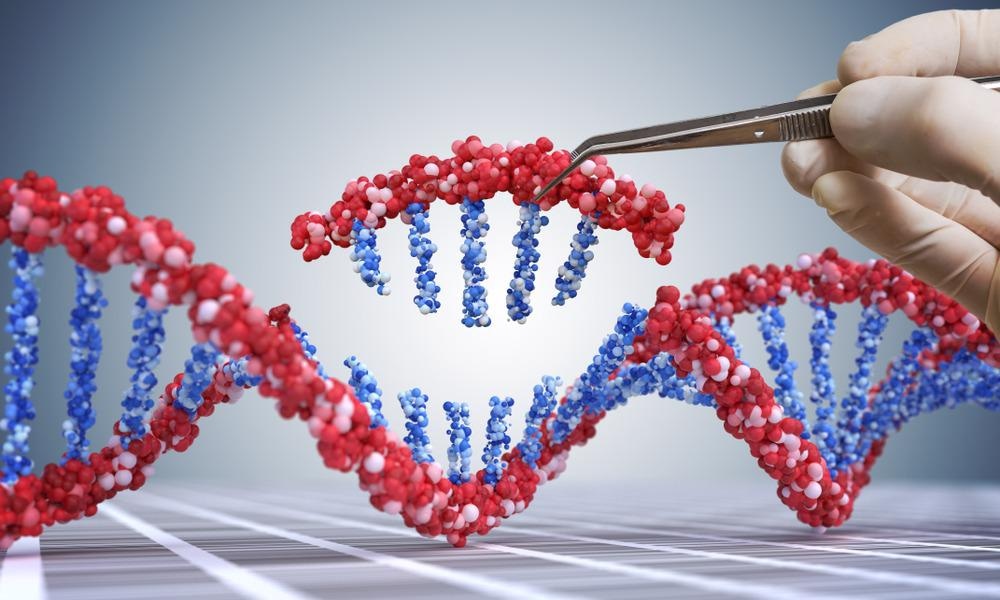Foodborne pathogens are multidrug-resistant (MDR) and cause a significant problem in food industries. An article published in the journal Materials Today Bio discusses repurposing the bacterial CRISPR-Cas system as a thergodiganostic tool to clear MDR pathogens.

Study: Theragnostic application of nanoparticle and CRISPR against food-borne multi-drug resistant pathogens. Image Credit: vchal/Shutterstock.com
The study highlights the combinatorial approach of nanoparticles and CRISPR-Cas towards drug delivery to eliminate pathogens.
Identification of Foodborne Pathogens
Foodborne MDR pathogens are the primary cause of the spread of infectious diseases. Listeria monocytogenes, Escherichia coli O157:H7, Staphylococcus aureus, and Clostridium botulinum are a few MDR pathogens that cause food-borne infections and affect immunocompromised individuals causing stomachache, diarrhea, and vomiting as symptoms.
Disease-causing MDR pathogen’s varied molecular strategies make them resistant to antimicrobial drugs. These strategies include disruption of the cell membrane, resistance to nucleotide synthesis inhibition, reduced protein synthesis, DNA gyrase, and topoisomerase IV gene mutation-induced fluoroquinolone resistance.
Although conventional microbiological approaches for the mitigation and detection of MDR pathogens are gold standards, these have limitations in the food industry. Moreover, rapid identification or detection of pathogens is critical in theragnostic applications.
The CRISPR-Cas complex serves as a tool for identifying the reoccurring infections by integrating invading genome spacer sequences. The inherent bacterial CRISPR-Cas9 system helps in the detection of food pathogens.
Apart from genome editing, the CRISPR-Cas9 system (pCasSA) is employed in high-resolution typing of pathogens, vaccine designing of starter culture against phages, and the manipulation of MDR genes. Despite its application versatility, the CRISPR-Cas system has drawbacks in its delivery. Hence, nanoparticle-aided CRISPR-Cas cargo transport to desired bacterial strain enhances the CRISPR-Cas efficiency.
Nanotechnology applications in the food industry showcased the potency of nanoparticles as promising candidates against MDR pathogens, mainly attributed to the nanoparticle size and shape that can penetrate the bacterial cell. Thus, nanoparticles are portrayed as carriers for CRISPR-Cas delivery and as a pathogen detection tool.
Combination of CRISPR-Cas and Nanoparticles in Thergodiganostics
Owing to the simplicity in application, complex interference, and sequence-specific DNA targeting, CRISPR-Cas is used as a genome-editing tool. CRISPR-Cas-based genome editing needs the establishment of CRISPR RNAs- trans-activating CRISPR RNA (crRNA-tracrRNA) complex and Cas9 protein effectors. Moreover, during the incorporation of desired change in the target genome, the damage done by CRISPR-Cas is repaired by the crRNA-tracrRNA complex. Although pathogens consist of inherent CRISPR-Cas-type II, the spacer that focuses on the editing point is absent in these pathogens. Developing single guide RNA (sgRNA) for genome-editing and Cas-9 delivery is an easy process.
CRISPR-Cas can be used in genotype selection in probiotics and the fermentation industry. Utilizing CRISPR-Cas in Streptococcus thermophilus helps the selection of a heterogeneous population based on the inherent genotypes. Moreover, self-targeting CRISPR-Cas can screen the target genomic islands. A combinatorial platform of CRISPR-Cas with single-stranded (ss) DNA helped in the mutant’s selection that can recombine with ssDNA. Further, combining ssDNA recombination with CRISPR-Cas can recover low efficiency and target codon mutagenesis.
CRISPR and nanomaterials enhance the sensitivity and stability of conventional diagnosis and improve accuracy in the food industry. Metal nanoparticles offer optimal electrolytic and optical properties and hence are used as reported molecules. Metal nanoparticles with CRISPR/Cas machinery are used for nanosensor designing to target various pathogens. The safety and effectiveness of CRISPR/Cas distribution are enhanced by its combination with nanotechnology, holding great potential for therodiagnostics in numerous food pathogens.
Transcription of CRISPR region and sgRNA processing leads to crRNAs and tracrRNA containing spacer sequence. The conjugation of sgRNA with protein complexes can degrade nucleotides. This conjugation allows the recognition of the DNA spacer sequence. Additionally, combining sgRNAs with the CRISPR-Cas system is beneficial for genome editing that allows the detection and elimination of pathogens.
Nevertheless, the promising application of the CRISPR-Cas system lacks proper delivery. However, viral and non-viral vectors can combat the drawbacks. To this end, cationic lipid nanoparticles were used as non-viral delivery systems in gene delivery. The nanoparticles enter the cells via endocytic pathways and transmit Cas-9 into the core.
Conclusion
In conclusion, despite the specificity and sensitivity of CRISPR/Cas-based combinatorial detection, it has a few shortcomings, including preamplification requirement and host compatibility with reduced off-targeting efficiency.
The major challenge in genome editing tools is their non-target effects due to ineffective genetic systems on CRISPR and cellular tools. The non-specific Cas9 NP uptake led to unexpected mutations in the immune cell leading to toxicity. Thus, future research should overcome these issues to prevent non-specific uptake by immune cells.
Apart from its application as detection tools for tracing MDR pathogens in the food industry, CRISPR is also used to generate resistance against phages in the fermentation industry. Additionally, the use of nano-compounds has enhanced the specificity of its delivery. Thus, nano-CRISPR stands as a potential tool against food pathogens.
Reference
Bhattacharjee, R., Nandi, A., Mitra, P., Saha, K et.al (2022). Theragnostic application of nanoparticle and CRISPR against food-borne multi-drug resistant pathogens, Materials Today Bio.https://www.sciencedirect.com/science/article/pii/S2590006422000898#undfig1
Disclaimer: The views expressed here are those of the author expressed in their private capacity and do not necessarily represent the views of AZoM.com Limited T/A AZoNetwork the owner and operator of this website. This disclaimer forms part of the Terms and conditions of use of this website.